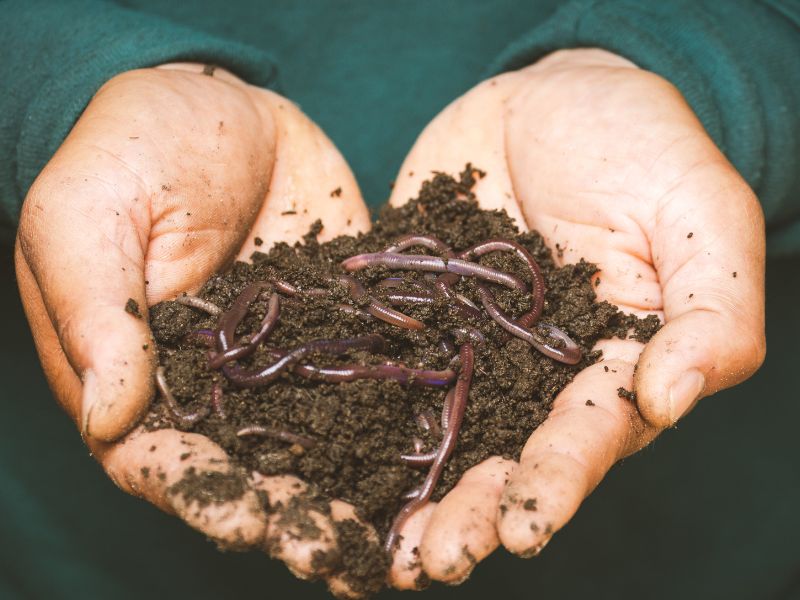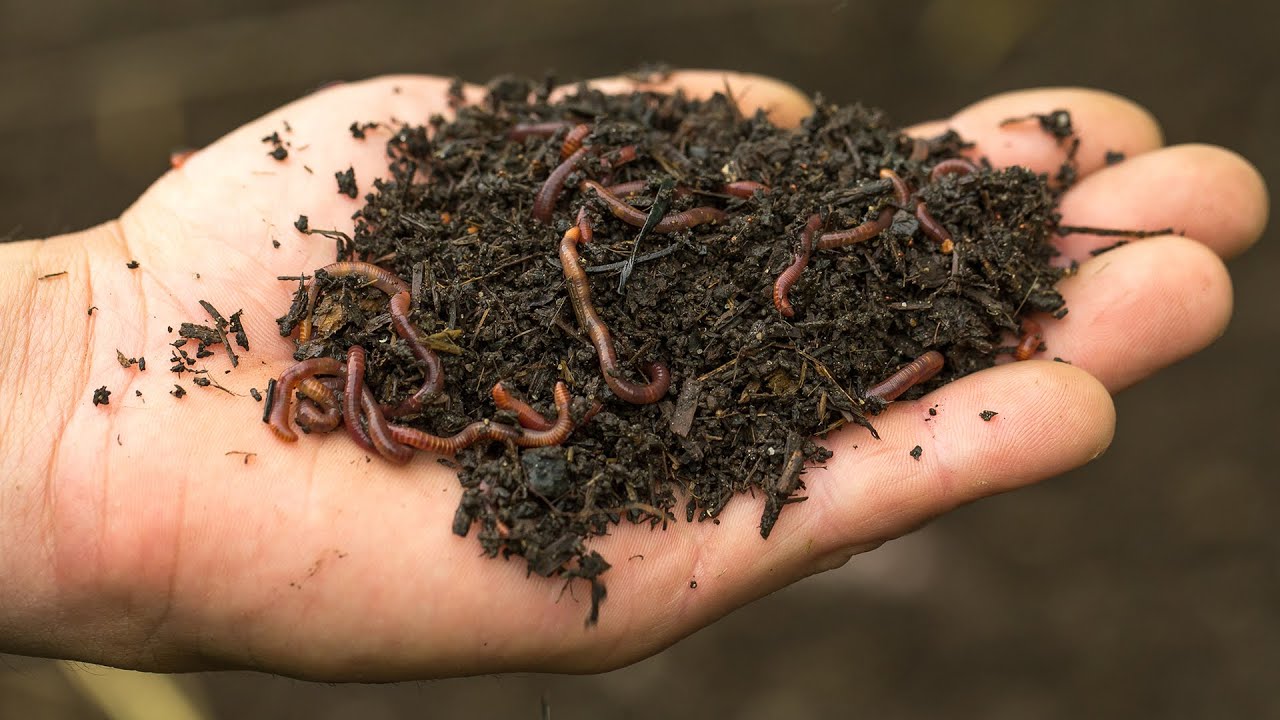Innovative Strategies in Red Wiggler Composting to Improve Your Plant food
Recognizing the Advantages of Red Wiggler Composting: Just How This Reliable Approach Transforms Organic Waste Into Nutrient-Rich Soil Modifications
Red Wiggler composting, utilizing the varieties Eisenia fetida, provides a compelling approach to organic waste administration, converting kitchen scraps and yard particles into useful soil changes. This technique not just improves dirt fertility yet likewise addresses pushing ecological worries, consisting of garbage dump waste reduction and greenhouse gas discharges. As we check out the ins and outs of this procedure, the complex advantages it provides may expose unexpected understandings right into lasting techniques and ecological balance. Comprehending these dimensions might prompt a reevaluation of just how we perceive waste and its possible contributions to a much healthier earth.
What Are Red Wigglers?
Red wigglers, medically called Eisenia fetida, are a species of earthworm that play a crucial role in vermicomposting systems. These worms are identified by their reddish-brown color, segmented bodies, and a distinctive ability to grow in organic-rich environments, making them excellent for composting applications - Red Wiggler Composting. Unlike their garden-dwelling counterparts, red wigglers prefer to populate the upper layers of soil, where decomposing matter is plentiful
Generally measuring in between 3 to 4 inches in length, red wigglers have a high reproductive rate, allowing them to multiply quickly under ideal problems. They possess an unique digestion system that permits them to refine organic waste successfully, converting it right into nutrient-rich spreadings, which are very helpful for plant development.
Their resistance to differing dampness levels and temperature varies additionally improves their utility in vermicomposting setups, making them a popular option among composting enthusiasts. In addition, red wigglers are cardio organisms, which demands a well-aerated composting environment, making sure efficient decomposition. Understanding the biological attributes and habits of red wigglers is crucial for enhancing their usage in lasting waste management techniques.

Advantages of Vermicomposting
Utilizing the power of vermicomposting offers a wide range of environmental and agricultural advantages. To start with, it substantially minimizes natural waste in landfills, consequently reducing methane emissions, a potent greenhouse gas. By drawing away food scraps and lawn waste to vermicomposting, we support a more sustainable waste administration system.
Additionally, vermicomposting enhances soil health. The castings generated by red wigglers are abundant in important nutrients, microorganisms, and enzymes, improving soil structure and fertility. This nutrient-rich amendment advertises robust plant development and enhances water retention, decreasing the demand for chemical fertilizers.
Moreover, vermicomposting fosters biodiversity in the soil ecosystem. The introduction of beneficial microorganisms from worm spreadings aids in disease reductions and nutrient biking, creating a much healthier atmosphere for plants.
Financially, vermicomposting minimizes the prices associated with chemical inputs and garbage disposal. Farmers and garden enthusiasts can cultivate top notch produce at reduced expenses, contributing to food safety and sustainability.
Just How to Start Composting
Starting a composting venture can be a uncomplicated and rewarding procedure. This will assist keep a balanced temperature level, crucial for the composting process.
Gather natural products such as cooking area scraps, yard waste, and shredded paper. Go for a balanced mix of 'green' products, high in nitrogen (e.g., fruit scraps, coffee grounds), and 'brownish' materials, rich in carbon (e.g., dried fallen leaves, cardboard) A proportion of roughly 2:1 environment-friendly to brownish materials is perfect.
Start layering your materials, making certain ample air circulation by transforming the pile regularly. This advertises cardio decay, reducing odors and speeding up the procedure. Screen dampness degrees; the garden compost needs to feel like a damp sponge but not overly damp.
Nutrient Profile of Vermicompost
Composting, particularly with red wigglers, yields a nutrient-rich item understood as vermicompost. In addition, it provides trace elements like calcium, magnesium, and iron, cultivating durable plant advancement and boosting dirt health and wellness.
The microbial task existing in vermicompost additionally enhances its account, presenting helpful bacteria dig this and fungis that promote nutrient accessibility and uptake in plants. This biological element help in reducing plant illness and improving soil framework, bring about enhanced water retention and oygenation.

Ecological Effect of Composting
The ecological influence of composting, particularly with making use of red wigglers, is extensive and multifaceted. This approach dramatically minimizes the quantity of natural waste sent out to landfills, which consequently lessens greenhouse gas exhausts, specifically methane-- a potent factor to environment modification. By diverting natural materials from landfills, red wiggler composting not just assists alleviate ecological degradation yet likewise advertises lasting waste monitoring methods.

In addition, composting adds to carbon sequestration, as the procedure catches co2 from the atmosphere and stores it in the dirt. This natural procedure help in combating climate change while enhancing the dirt - Red Wiggler Composting. Overall, red wiggler composting provides a feasible, environmentally friendly service for waste monitoring and ecological sustainability, advertising healthier ecological communities and a much more sustainable future
Final Thought
In verdict, Red Wiggler composting serves as a reliable technique for transforming natural waste into beneficial dirt amendments. The process not only boosts soil fertility and structure but also mitigates environmental concerns linked with waste disposal.
Red Wiggler composting, utilizing the types Eisenia fetida, offers an engaging strategy to organic waste management, converting kitchen scraps and yard particles right into beneficial soil amendments. Unlike their garden-dwelling counterparts, red wigglers choose to live in the top layers of dirt, where decomposing issue is abundant.
The spreadings generated by red wigglers are rich in necessary nutrients, microbes, and enzymes, improving dirt framework and fertility. The nutrient-rich byproducts of red wiggler task enhance soil structure, increase water retention, and advertise biodiversity within the soil ecological community.In final thought, Red Wiggler composting serves as an effective technique for converting natural waste right into this hyperlink beneficial dirt changes.